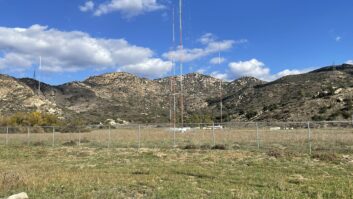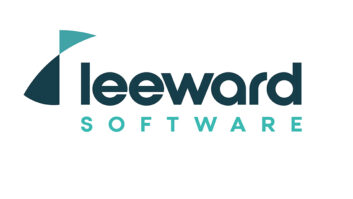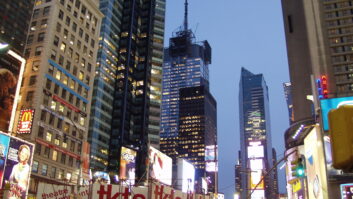
Variable energy costs and an interest in “going green” are making many broadcasters think about the environment when planning renovations or construction of new facilities.
Yet most managers and engineers are unfamiliar with the terminology, technologies and standards involved in green building. Radio World asked two industry experts to comment on building conservation in new broadcast facilities.
As broadcasters approach a green building project or renovation, “Leadership in Energy and Environmental Design” or LEED certification may become an area of interest.
Tom Hicks, vice president for international programs at the U.S. Green Building Council, which developed the LEED standards, said, “Initially LEED was intended for new commercial construction, but now standards have now been developed for existing structures, residences and schools.”
Getting LEED certification has several advantages. LEED-certified buildings use key resources more efficiently than conventional buildings. They are also healthier work environments, as demonstrated by higher employee productivity and less absenteeism. Among other advantages of LEED certification are reduced environmental impact on the construction site, improved air and water quality, and reduced solid waste.

LEED certification comprises requirements and credits. All builders must meet requirements, credits are “bonus points” in six categories: sustainable sites, water efficiency, energy and atmosphere, materials and resources, indoor environmental quality and innovation and design process.
In LEED v2.2 for new construction, there are 69 possible points, allowing for four levels of certification: certified, 26–32 points; silver, 33–38 points; gold, 39–51 points and platinum, 52–69 points.
LEED certification may be obtained by submitting an electronic application form that documents compliance with requirements of the rating system, along with registration and certification fees. LEED project submissions are reviewed by the USGBC with the support of independently contracted reviewers.
Stay current
Hicks said continuing education is key to understanding the terminology associated with green buildings.
There are several options, depending on interest and area of focus. Workshops and webinars are offered through the USGBC. More advanced educational opportunities are also available. “Folks who are serious about working with green building programs may wish to take the LEED Accredited Professional exam, which demonstrates a baseline knowledge of green building technology.” Individuals who pass the exam may use the LEED Accredited Professional (AP) acronym after their name.
“A good reference book is also essential to understanding the terminology. Which guide you purchase depends on your area of focus,” said Hicks. For broadcasters, he recommends “LEED New Construction v2.2 Reference Guide” and “LEED Core and Shell v2.0 Reference Guide,” both available for purchase through the USGBC Web site.
Top Ten Technologies for Green Building Green roofs, both reflective and vegetative, help reduce the urban “heat island” effect by minimizing a building’s absorption of solar radiation.
Gray water systems recycle water from sinks and water fountains to be used in toilets and other non-drinking applications. Captured rainwater may also be used.
Geothermal heat pumps transfer heat from the ground to buildings in the winter and reverse direction to provide cooling in the summer. They may be built anywhere in the United States.
Tubular skylights are less costly than conventional skylights, distribute light evenly, are energy efficient and don’t cause ultraviolet damage to carpets and furniture.
Eco Machines treat wastewater in natural processes that combine microorganisms, plants, snails and fish to clean water, which can then be used for irrigation.
Daylighting uses exterior light to illuminate a building’s interior, reducing electricity demand during the day. Taller floors and light shelves permit natural light to penetrate further into the building. Daylight sensors turn off artificial lighting when daylight is sufficient.
Right-sized HVAC guidelines enable more accurate estimates of heating and cooling loads. A right-sized system will operate for long periods of time, rather than cycling on and off, resulting in longer equipment life and better control of the indoor environment.
Wireless controls and sensors for heat, lighting and security require less installation time than their wired counterparts and add flexibility. To control multiple pieces of equipment or temperature from multiple locations, just wall-mount additional wireless thermostats or controls.
High-performance windows have triple-pane glass and double-skin windows that reduce heating and cooling loads as well as draftiness and moisture condensation. On some double-skin windows, the inner windows can be opened to increase ventilation.
Concentrator photovoltaic (CPV) technology achieves greater efficiency than flat panel photovoltaics by using mirrors or lenses to concentrate solar energy onto smaller areas of PV material. Prototypes deliver twice the output of conventional solar panels at half the cost. CPVs need trackers to maintain optimum orientation towards the sun. Which technologies are applied and how depends on the location, type and size of building. For example, solar, geothermal and wind power may reduce a building’s energy footprint, but not all are applicable in most locations. Hicks adds that equipment installed during construction frequently is oversized. Often this is a function of unclear objectives and designers protecting themselves. This drives up capital costs and often results in equipment not running efficiently.
When planning sites, the emphasis should be on doing less harm. Prefabricated buildings, for example, generate less waste and have a lower impact on the local environment. Permeable paving reduces runoff into streams by allowing water to return to the water table through a filtration system.
Finally, Hicks emphasizes that green construction takes an integrated approach and should be a team effort.
“The team should include architects, developers, contractors and the ultimate tenants. It is important to get different points of view early on. It results in a more environmentally responsible building.”
Natural filters
Green buildings aren’t all about understanding new technology. Getting back to nature with indoor plants can also yield enormous benefits.
M.J. Gilhooley, program coordinator for Green Plants for Green Buildings, said, “Plants act as the lungs of an interior space. They pull in toxins through transpiration and give off oxygen. Different plants absorb different types of building toxins.” The course “Authentically Green Interiors: Maximizing Nature’s Design” may be taken for continuing ed credits from the USGBC and American Institute of Architects.
Many toxins can be detected as much as a year after a building is completed. The FDA has identified formaldehyde and benzyne as two of the most damaging of these indoor toxins. She said bamboo palm and peace lily are effective at reducing the levels of these toxins
Gilhooley notes that research demonstrates a 23 percent reduction in health complaints in buildings with plants, along with a 14 percent reduction in absenteeism.
The benefits of plants extend beyond improved physical health of a building’s occupants. Other surveys demonstrate reduced stress levels and enhanced creative problem solving and productivity when green plants are present.
Radio World articles in the “Green Radio” series are posted at radioworld.com under the Columns tab.












